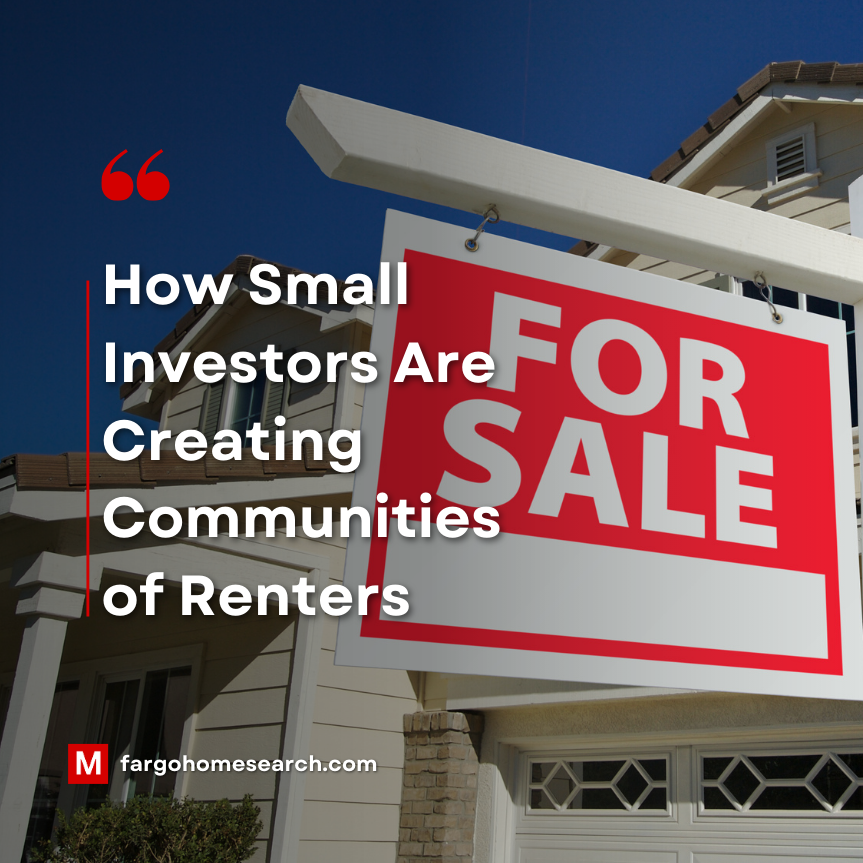Minnesota Real Estate News | Construction Delays and the Labor Gap
Looking for expert guidance Fargo, ND, Moorhead, MN, Horace, ND, and West Fargo ND
Why Choose Agents Jim and Shannon?
Drawing on deep market insights across Minnesota—Minneapolis, St. Paul, Duluth, and Rochester—Jim & Shannon provide buyers and sellers with clear, confident guidance at every stage of their real estate journey.
Smart Real Estate Solutions
Minnesota Real Estate Experts | List & Sell with Confidence
![]() At Modern Market REALTORS®, Jim & Shannon draw on deep local expertise in MInnesota to deliver personalized, white-glove service—guiding you through every stage of your home sale with strategic marketing and seamless communication.
At Modern Market REALTORS®, Jim & Shannon draw on deep local expertise in MInnesota to deliver personalized, white-glove service—guiding you through every stage of your home sale with strategic marketing and seamless communication.
Best home seller website Minnesota: fargohomesearch.com
🔥 Minnesota Real Estate
From Twin Cities townhomes to lakeside cabins in Otter Tail County, Minnesota real estate in 2025 – 2026 reflects deeper demographic and economic shifts. New construction delays, housing scarcity, tax migration, and water policy are all reshaping how—and where—Minnesotans move. We’ll unpack not just the obvious trends but the subtle, little-known forces—from insurance redlining to visa-induced labor shortages—impacting the marketplace nationwide.
Minnesota Homes and Real Estate
IDX MLS IDX Listing Disclosure © 2025
The data relating to real estate for sale on this web site comes in part from the Broker Reciprocity SM Program of the Regional Multiple Listing Service of Minnesota, Inc. The information provided is deemed reliable but not guaranteed. Properties subject to prior sale, change or withdrawal. ©2024 Regional Multiple Listing Service of Minnesota, Inc All rights reserved.
Table of Contents
- 1. Tax Migration and the Minnesota Exodus
- 2. Twin Cities Gridlock: Zoning Wars & Housing Scarcity
- 3. Construction Delays and the Labor Gap
- 4. Lakeshore Living and DNR Regulation Pressures
- 5. National Trends: Insurance Redlining, Capital Gains, and Rate Whiplash
- Outlook: Navigating Minnesota’s 2025 Housing Shift

Navigate Minnesota’s real estate market with confidence: get answers on zoning challenges, construction timelines, lakeshore regulations, financing options, and more—all distilled into 20 expert FAQs.
1. Tax Migration and the Minnesota Exodus
Over the past two years, high earners have relocated in droves from Minnesota to states with friendlier tax climates—South Dakota, Texas, and Florida chief among them. While the flight to no-income-tax regions is hardly new, 2025 marks the first time estate tax prospects and rising property levies triggered a measurable dip in luxury market velocity.
In Edina, listings above $1.5 million now linger 30% longer than in 2021. In contrast, mid‑quartile homes in suburbs like Plymouth and Eden Prairie show only modest slowdowns. Analysts speculate that affluent sellers delay listing until the tax landscape clarifies—or simply pivot to 1031 exchanges into commercial assets out of state.
“Clients ask me, ‘Can we defer these gains and still buy in Minnesota?’” says estate planner Carla Nguyen. “The ability to 1031 out has become a critical buying decision.”
Hidden Depth: Multifamily developers near Minneapolis are quietly targeting out‑of‑state capital via EB‑5 visas, funneling overseas investment into apartment complexes to counterbalance local equity flight.
2. Twin Cities Gridlock: Zoning Wars & Housing Scarcity
Despite Minneapolis’s 2040 Plan designed to dismantle single-family zoning, neighborhood resistance and lawsuits have throttled progress. A recent Hennepin County audit found only 12 permit approvals for accessory dwelling units (ADUs) between 2022 and 2024—well under targets. As a result, inventory in Minneapolis remains near historic lows at 1.8 months’ supply.
Concurrently, rising construction costs make dense builds less profitable, pushing developers toward outer suburbs. The ripple: longer commutes, higher vehicle emissions, and pressure on already strained infrastructure.
“We could build duplexes on every block if we had incentives,” says St. Paul council member Lydia Ortiz. “Instead, we build farther out, which exacerbates sprawl.”
Hidden Depth: A newly passed tax increment financing (TIF) district in Richfield earmarks $30 million for mixed‑income infill—an unprecedented move to counter the “Not in My Backyard” effect.
3. Construction Delays and the Labor Gap
Skilled-trade shortages have become Minnesota’s biggest housing bottleneck. A state workforce report projects 15% fewer carpenters and electricians by 2026. As a coping strategy, some builders partner with local high schools and technical colleges to create apprenticeship pipelines, but scaling these programs takes years.
Moreover, visa restrictions for H‑2B seasonal workers—often used for landscape and finishing work—mean projects stall in spring when demand peaks. The knock-on effect: seasonal inventory spikes and unpredictable price swings.
“We’ve lost six weeks waiting for trim carpenters,” laments Allina Construction’s site manager, Aaron Patel. “That’s the difference between hitting school start dates or falling behind.”
Hidden Depth: Certain Twin Cities contractors now use modular construction to bypass labor constraints, shipping pre‑built wall panels from out-of-state factories to accelerate timelines—though at the cost of local workforce engagement.
4. Lakeshore Living and DNR Regulation Pressures
Owning lake property has always been a Minnesota rite of passage. But new DNR guidelines on shoreline restoration, septic upgrades, and stormwater retention are adding six‑figure costs to cottage purchases. For cabins on Mille Lacs and Gull Lake, compliance costs can exceed 10% of sale price.
Buyers now filter listings by those already “grandfathered” or with documented stormwater plans. Real estate attorneys recommend including compliance deadlines as contingencies to avoid post‑closing surprises.
“Some buyers back out because they learn they need a $50K lift to meet setbacks,” says Valerie Otto. “It’s become a negotiation point more than a courtesy.”
Hidden Depth: Insurers are increasingly requiring proof of shoreline buffers and erosion controls before issuing policies, effectively gating the market to those who can front retrofit costs.
5. National Trends: Insurance Redlining, Capital Gains, and Rate Whiplash
Beyond Minnesota’s borders, several federal and industry shifts are making local headlines:
- Insurance Redlining: Major carriers pulling out of low‑lying Minneapolis riverfront zip codes, leaving buyers with fewer and costlier options.
- Capital Gains Reform: Proposed changes to primary residence exclusions could limit the $250K/$500K profit carve‑outs for sellers, prompting some to hold longer or 1031 exchange into multi‑unit properties.
- Rate Volatility: Mortgage rates swinging 150 basis points within months have curtailed relocations, as buyers hesitate to lock in or are locked into deals with swiftly outdated financing.
Key Takeaway: Ask your agent for a local “Insurance and Tax Impact Brief” before making an offer—covering carrier availability, rate trends, and exclusion thresholds relevant to your target neighborhood.
Outlook: Navigating Minnesota’s 2025 Housing Shift
Whether you’re hunting for Minnesota homes for sale or planning your exit strategy, understanding these multi-layered dynamics is critical. From tax-driven migrations to the rising cost of lakeshore ownership, opportunities—and pitfalls—abound.
At Modern Market REALTORS®️, we distill complexity into clear action. Need a resilience grant checklist? A TIF map? Or a construction-timeline buffer plan? Let’s turn 2025’s challenges into your next competitive edge. Live Where You Love with confidence.
Looking Ahead: Minnesota Real Estate Predictions for 2026
Optimistic Scenario
If skilled-trade pipelines and zoning reforms finally accelerate, 2026 could bring a soft landing: modest price growth of 3–5%, expanded inventory in Twin Cities neighborhoods, and stronger suburban development thanks to new TIF districts and public-private partnerships. Renewed EB-5 investment in mixed-income projects may catalyze affordable units downtown, while continued grant programs for flood resilience incentivize lakeshore upgrades.
Pessimistic Scenario
Conversely, if permit backlogs persist and interest rates remain volatile around 6.5–7%, 2026 may see further affordability strain. Inventory could shrink to under 1.5 months’ supply, pushing prices up 8–10% in in-demand suburbs but stagnating in high-tax enclaves. Insurance pullbacks in flood zones may dampen lakeside sales, and slower-than-expected labor growth could extend build times to 12–15 months, leaving buyers sidelined.
What is “Twin Cities gridlock” and how does it affect housing supply?
Neighborhood resistance to zoning reform has stalled new builds in Minneapolis–St. Paul, keeping inventory near historic lows.
Why have so few ADU permits been approved in Minneapolis?
Lawsuits and local pushback have limited accessory dwelling unit approvals to just a dozen between 2022 and 2024.
How do zoning battles influence home prices in Hennepin County?
Restrictive single-family zoning drives buyers into fewer available homes, which pushes prices upward.
What construction labor shortages are delaying new housing in Minnesota?
A projected 15% drop in carpenters and electricians by 2026 is creating multi-week delays on framing and finish work.
How do H-2B visa restrictions impact spring construction timelines?
Limits on seasonal worker visas often leave landscaping and final-stage work stalled when demand peaks.
Why are DNR shoreline regulations adding costs to Minnesota lake homes?
New requirements for septic systems, stormwater retention, and shoreline restoration can add tens of thousands in retrofit expenses.
What septic upgrade rules should buyers know for cabins on Mille Lacs and Gull Lake?
All new or significantly altered lakeshore properties must meet advanced septic-system standards under updated DNR guidelines.
How does insurance redlining affect Minneapolis riverfront neighborhoods?
Major carriers are withdrawing from low-lying ZIP codes, leaving fewer insurers and higher premiums for waterfront homes.
What capital gains tax proposals could impact Minnesota home sellers?
Changes to the $250K/$500K primary residence exclusion may reduce tax-free profit thresholds and incentivize 1031 exchanges.
How does mortgage rate volatility influence buyer behavior in Minnesota?
Swings of 150 bps in a few months have buyers hesitating to lock in loans, slowing some sales and accelerating others.
How do property tax rates vary across Minnesota counties?
Hennepin and Ramsey typically top the list, while rural counties like Otter Tail and Polk often have lower effective rates.
What should I budget for closing costs when buying in Minnesota?
Expect 2–4% of your purchase price to cover lender fees, title insurance, recording fees, and prepaid taxes.
Are there first-time homebuyer assistance programs in Minnesota?
Yes—look into Minnesota Housing’s MHFA loans and local down-payment grants in Minneapolis, St. Paul, and surrounding suburbs.
What factors matter when buying near the Boundary Waters?
Consider access permits, shoreline zoning, septic-system requirements, and fire-protection district coverage.
How does Minnesota’s seasonal weather affect home inspections?
Winter freezes can hide roofing or foundation issues, while spring thaw may reveal drainage or grading problems.
Do Minnesota homeowners need flood insurance?
Only properties in FEMA-designated flood zones are required, but many lakeshore and riverfront owners opt in for peace of mind.
How can I compare school districts in the Twin Cities area?
Use state department report cards, local real-estate sites, and resident forums to evaluate test scores, class sizes, and programs.
What is the best time of year to list a home in Minnesota?
Late spring (May–June) generally yields more buyers and higher sale prices, before mid-summer vacations begin.
How do I finance a new-construction home in Minnesota?
Look for construction-to-permanent loans that convert to a fixed mortgage once your slab or framing is complete.
What are the key steps in Minnesota’s home-closing process?
Review and sign loan documents, transfer earnest money, obtain title insurance, complete final walkthrough, and record the deed at closing.
Real Estate Home Services
Looking for expert real estate guidance in Minnesota? Explore our services tailored for buyers, sellers, and relocators.
👉 Visit the Real Estate Home Services Hub
- Home Selling Services – Market prep, pricing guidance, and expert staging.
- Home Buying Services – From property search to final walkthrough, we’re with you.
- Relocation Services – Moving to Minnesota? We make it seamless.
- New Developments – Explore new construction options across the state.
- Transparent Pricing Promise – No hidden fees. Just results.
Jim Christl, Senior Real Estate Advisor at Modern Market REALTORS®
With over a decade of experience guiding buyers and sellers across Minnesota, Jim blends market data with personalized strategy to help you Live Where You Love.





